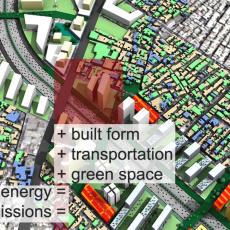Dr. Simi Hoque is passionate about improving the ways in which buildings use the earth’s resources. She teaches environmental systems and sustainable design principles in the Department of Environmental Conservation at UMass Amherst. Her research, partially funded by the Center’s Massachusetts Agricultural Experiment Station, is focused around the application and development of energy-efficient buildings. Dr. Hoque specializes in energy modeling, resource efficiency, and systems design. She is co-author of a recent online publication (October 2013) intended to provide a quantitative approach to assessing sustainability indicators in a city.
Research
Cities today generate almost two-thirds of the world’s primary energy demand. By 2030, this is projected to increase to three-quarters, matching the urban sector’s expected share of global energy-related CO2 emissions. The current urban outlook demands a comprehensive understanding of urban sustainability policies and programs to address climate change and energy security.
Dr. Hoque’s research is aimed at developing an analytical framework to integrate the performance indicators for buildings, transportation systems, and green spaces at an urban scale. The framework will be designed to systematically evaluate and predict the aggregate impacts of building, transportation, and green space development in terms of quantifiable measures, such as greenhouse gas emissions, energy use, water consumption, and material waste.
The way in which this framework is designed has the potential to transform the way energy conservation, climate adaptation, and CO2 emissions policies are developed, and is important to managing and reducing the energy, climate, and environmental impacts of urban growth. It is innovative in its integration of building energy consumption, transportation design and planning, and green space management. The interactions among these domains have not previously been quantified in one computational framework such as the one that Dr. Hoque and her colleagues are creating. Unifying the analytical methods and modeling techniques will not only lead to new knowledge about how existing urban regions may improve their overall energy balance, but will also provide a framework for predicting and evaluating the complex interactions of various environmental indicators in a city.
Integrated Urban Metabolism Analysis Tool (IUMAT) written by Nariman Mostafavi, Mohamad Farzinmoghadam, Simi Hoque and Benjamin Weil may be purchased at http://www.tandfonline.com/doi/full/10.1080/08111146.2013.826578#.Ul1Wi1CgnwA


